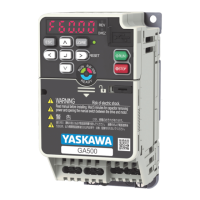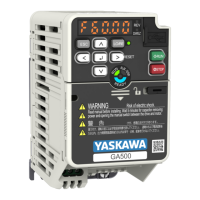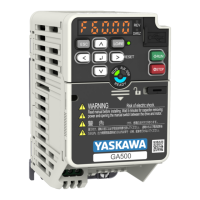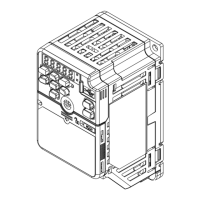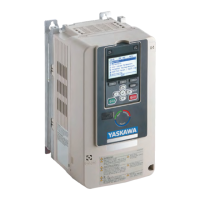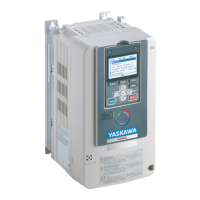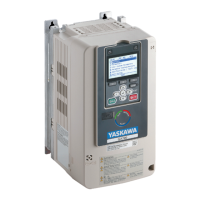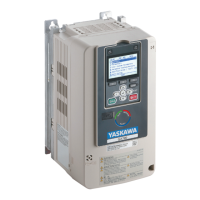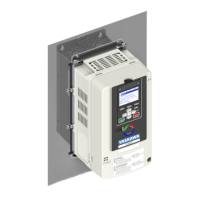15 UL Standards
YASKAWA TOEPC71061752B GA500 Drive Installation & Primary Operation 181
NOTICE
When you connect more than one motor to one drive or when the motor amp rating is
higher than the drive amp rating, set L1-01 =0 [Motor Overload (oL1) Protection = Disabled] and install thermal
overload relays for each motor. The electronic thermal protection of the drive will not function and it can cause
damage to the motor.
1 : Variable Torque
Use this setting for general-purpose motors with a 60 Hz base frequency.
The overload tolerance decreases as motor speed decreases because the cooling fan speed
decreases and the ability of the motor to cool decreases in the low speed range.
The overload tolerance characteristics of the motor change the trigger point for the electronic
thermal protector. This provides motor overheat protection from low speed to high speed across
the full speed range.
Load Tolerance Cooling Capability
Overload Characteristics
(at 100% motor load)
This motor is designed to operate with
commercial line power. Operate at a 60
Hz base frequency to maximize the
motor cooling ability.
If the motor operates at frequencies less
than 60 Hz, the drive will detect oL1.
The drive triggers a fault relay output
and the motor coasts to stop.
2 : Constant Torque 10:1 Speed Range
Use this setting for drive-dedicated motors with a speed range for constant torque of 1:10.
The speed control for this motor is 10% to 100% when at 100% load. Operating slower than
10% speed at 100% load will cause motor overload.
Load Tolerance Cooling Capability
Overload Characteristics
(at 100% motor load)
This motor is designed to withstand
increased temperatures during
continuous operation in the low speed
range (10% base frequency).
The motor operates continuously at
10% to 100% base frequency.
Operating slower than 10% speed at
100% load will cause motor overload.
3 : Constant Torque 100:1 SpeedRange
Use this setting for vector motors with a speed range for constant torque of 1:100.
The speed control for this motor is 1% to 100% when at 100% load. Operating slower than 1%
speed at 100% load will cause motor overload.
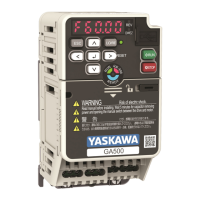
